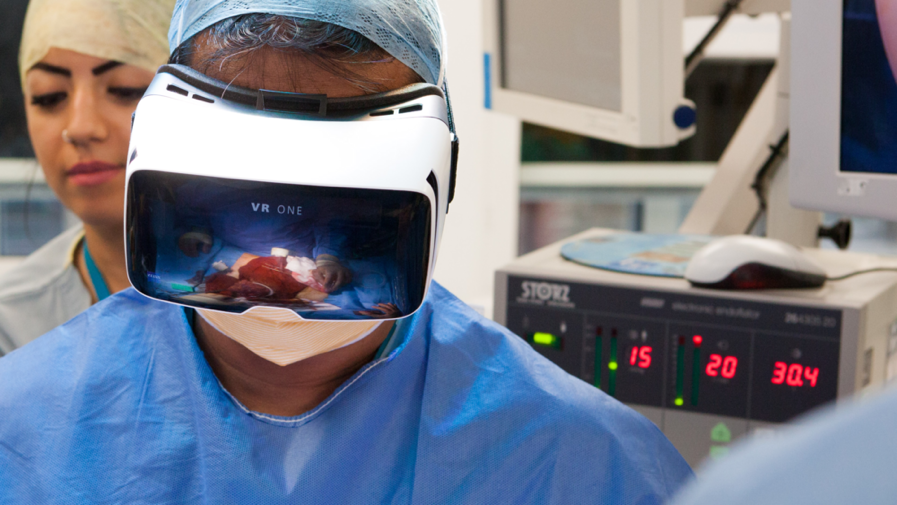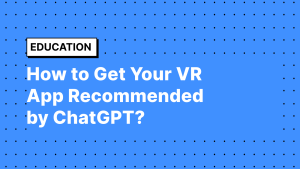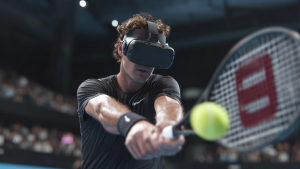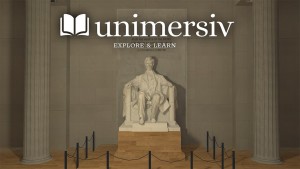Virtual Reality Medical Training: Another Healthcare Revolution?
Virtual Reality | February 1, 2017
When sportspeople go through a bad phase, they are advised by their coaches to visualize themselves achieving their goals successfully. Do you know why?
WE CREATE PROFESSIONAL VR TRAINING CONTENT
We develop professional VR training solutions for our clients to help them reduce training costs. Contact us if you are interested in using Virtual Reality to train your team/employees faster.
There’s always been a strong mental connection between performance and seeing oneself as being successful. Visualizing yourself on the ladder of success certainly helps you boost your confidence level. And that’s exactly why VR can be an innovative technology for training.
Virtual reality in the healthcare industry is already being used effectively to train medical students, new surgeons and help medical professionals refresh their skills. As Virtual Reality is rocking in the field of technology and entertainment, health sectors are also finding new and innovative ways to utilize VR systems over old-school training techniques.

“In hospitals and healthcare centers alone, VR technology is already being used effectively to train medical students”
On that note, let’s find out what are the different ways medical training centers are using virtual reality.
Training medical students in the healthcare department
VR is being used in medical schools and other healthcare setups for instructing and educating. Medical students now have a more interactive method to learn and understand the human body and its systems, within the VR environment.
From a learner’s point, the possibilities are unlimited, as trainees can perform ‘hands on’ operations in a controlled and safe environment. Trainees can afford to make mistakes and learn from it in the VR setup where there is literally no risk at all; both patients and trainees are in a safe zone. By interacting with virtual patients, medical students can learn new skills which they later use in the real world.
VR in paramedic training
VR is a blessing for students practicing paramedics and similar field of study. Trainees can learn life-saving techniques and skills without placing anyone (the patients and themselves) at risk. With no risk involved, students can interact with stimulated emergency or accident in a virtual reality environment. As VR offers a realistic scenario, students respond to high-pressure situation and learn how to deal with it. This is a perfect way to get ready for the real event.
Virtual Reality in dentistry
Virtual reality can be a complete and comprehensive model for learning almost anything in the medical world. Dentistry is no different in this regard.
There is a new medical technique called ‘HapTEL’, derived from the word haptics (meaning ‘touch’ in the Greek language) used to educate dentist students.
The VR dental chair also comes with a training scenario where learners are given 3D set of teeth to work on.
With this, they perform many operations like filling using a VR drill that can mimic the pressure and movement of an actual drill using a force feedback. The feedback that changes with pressure enables students to make adjustments in their techniques as required.
Virtual Reality in preventative medicine
VR is extensively used in helping people learn positive lifestyles like controlling the intake of alcohol, quitting smoking, healthy diet recommendations and exercising. Virtual reality can make a big difference in educating patients to bring positive changes to their health and habits, reducing the risk of disease and illness.
VR comes into play both in its desktop form as well as its “immersive CAVE system” form to show the effects of negative practices and negative lifestyle choices. For instance, one can demonstrate the negative effects of smoking within the VR world and show what happens to the human body over a period of time and help people change their habits and behavior.
VR can help in counseling as well
Another area where VR shows its power is counseling. The treatment of phobia is a perfect example. For instance, stage fear or the fear of speaking in front of a large audience can be corrected in a virtual environment, where the sufferer can practice public speaking in front of a virtual crowd.
Similarly, the VR environment can be used for individuals who have developed PTSD (post-traumatic stress disorder). Remember, PTSD can sometimes be a life-threatening condition. A typical example is that of people in the army who have served in the borders and have been traumatized. These soldiers are treated with many different techniques for fighting the symptoms of their condition.
The patient is provided with a pair of VR glasses or HMD (head mounted display), input device and data glove to mimic the real environment.
Final Thoughts on the use of Virtual Reality in medical training
The techniques we have mentioned here are just a few ways medical schools are exploring virtual reality and creating a revolution in medical training. As more and more innovative educators and VR developers collaborate, the application of virtual reality in medical training will be more comprehensive and sophisticated.
The good news for healthcare schools and institutions and medical students and patients is that Virtual Reality is redefining the healthcare world forever. We might all witness a medical revolution like we haven’t seen before.
Subscribe to our newsletter
We write about the use of Virtual Reality for non-gaming applications.










